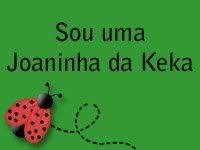Saint Patrick's Day
From Wikipedia, the free encyclopedia
Jump to:
navigation,
searchSaint Patrick's Day
The
Chicago River is dyed green each year for the St. Patrick's Day celebration, shown here in 2008.
Observed by
Irish peoplePeople of Irish ancestry
Roman CatholicsAnglicansEastern OrthodoxEnglish-speaking countries
Type
National, Ethnic, Christian, Festive
Date
March 17
Celebrations
Attending Mass
Parades
Wearing
shamrocksWearing green
Drinking alcohol
St. Patrick's Day 2004 in
Cork, Ireland.
Saint Patrick's Day (
Irish: Lá ’le Pádraig or Lá Fhéile Pádraig), colloquially St. Paddy's Day or Paddy's Day, is an annual
feast day which celebrates
Saint Patrick (
circa 385–461 AD), one of the
patron saints of
Ireland, and is generally celebrated on
March 17.
The day is the
national holiday of
Ireland. It is a
bank holiday in
Northern Ireland and a
public holiday in the
Republic of Ireland,
Montserrat, and the
Canadian province of
Newfoundland and Labrador. In the rest of
Canada, the
United Kingdom,
Australia, the
United States and
New Zealand, it is widely celebrated but is not an official holiday.
[1]It became a
feast day in the
Roman Catholic Church due to the influence of the
Waterford-born
Franciscan scholar
Luke Wadding[2] in the early part of the 17th century, and is a
holy day of obligation for
Roman Catholics in Ireland. The date of the feast is occasionally moved by church authorities when March 17 falls during
Holy Week; this happened in 1940 when Saint Patrick's Day was observed on April 3 in order to avoid it coinciding with
Palm Sunday, and happened again in 2008, having been observed on
15 March.
[3] March 17 will not fall during Holy Week again until 2160.
[4]Celebration overview
Saint Patrick's Day is celebrated worldwide by
Irish people and increasingly by non-Irish people (usually in Australia and North America). Celebrations are generally themed around all things Irish and, by association, the color
green. Both
Christians and non-Christians celebrate the secular version of the holiday by wearing green or orange, eating
Irish food and/or green foods, imbibing Irish drink (such as
Guinness,
Baileys Irish Cream or
carbomb drink) and attending parades.
The St. Patrick's Day parade in
Dublin, Ireland is part of a five-day festival; over 500,000 people attended the 2006 parade. The largest St. Patrick's Day parade is held in
Chicago and it is watched by over 2.5 million spectators.[
citation needed] The St. Patrick's Day parade was first held in Boston in 1761, organized by the Charitable Irish Society.
New York City's celebration began on
18 March 1762 when Irish soldiers in the British army marched through the city.[
citation needed] The predominantly French-speaking Canadian city of
Montréal, in the province of
Québec has the longest continually running Saint Patrick's day parade in North America, since 1824;
[5] The city's flag has the Irish emblem, the shamrock, in one of its corners. Ireland's cities all hold their own parades and festivals, including
Dublin,
Cork,
Belfast,
Derry,
Galway,
Kilkenny,
Limerick, and
Waterford.
Parades also take place in other Irish towns and villages.
"Leprechauns" kick off week-long festivities by renaming
New London, Wisconsin to
New DublinOther large parades include those in
Savannah, Georgia (
[3]),
New London, Wisconsin (which changes its name to New Dublin the week of St. Patrick's Day) (
[4]),
Dallas,
Cleveland,
Manchester,
Birmingham,
London,
Coatbridge,
Jackson, Mississippi,
Boston,
Buffalo,
Houston,
Chicago,
Cincinnati,
[5]Kansas City,
Rolla,
Philadelphia,
Indianapolis,
Pittsburgh,
Denver,
St. Paul,
Sacramento,
San Francisco,
Scranton,
Seattle,
Butte,
Detroit,
Toronto,
Vancouver,
Syracuse,
Newport,
Holyoke and throughout much of the Western world. The parade held in
Sydney, Australia is recorded as being the largest in the Southern Hemisphere.
As well as being a celebration of Irish culture, Saint Patrick's Day is a Christian festival celebrated in the Catholic Church, the
Church of Ireland, and some other denominations. The day almost always falls in the season of
Lent. Some bishops will grant an
indult, or release, from the
Friday no-meat observance when St. Patrick's Day falls on a Friday; this is sometimes colloquially known as a "corned-beef indult".
[6] When 17 March falls on a Sunday, church calendars (though rarely secular ones) move Saint Patrick's Day to the following Monday—and when the 17th falls during Holy Week (very rarely), the observance will be moved to the next available date or, exceptionally, before holy week.
[7]In many parts of North America, Britain, and Australia,
expatriate Irish and ever-growing crowds of people with no Irish connections but who may proclaim themselves "Irish for a day" also celebrate St. Patrick's Day, usually with the consumption of traditionally Irish alcoholic beverages (
beer and
stout, such as
Murphys, Beamish,
Smithwicks,
Harp, or
Guinness;
Irish whiskey;
Irish coffee; or
Baileys Irish Cream) and by wearing green-coloured clothing.
2007 marked the first annual St. Patrick's Day parade and festival in the
Scottish city of
Glasgow.[
citation needed]
Wearing of the green
St. Patrick used the
shamrock, a three-leaved plant, to explain the
Holy Trinity to the pre-
Christian Irish.
St. Patrick's Blue, not green, was the colour long-associated with St. Patrick. Green, the colour most widely associated with Ireland, with
Irish people, and with St. Patrick's Day in modern times, may have gained its prominence through the phrase "
the wearing of the green" meaning to wear a
shamrock on one's clothing. At many times in
Irish history, to do so was seen as a sign of Irish
nationalism or loyalty to the
Roman Catholic faith. St. Patrick used the shamrock, a three-leaved plant, to explain the
Holy Trinity to the pre-
Christian Irish. The wearing of and display of
shamrocks and shamrock-inspired designs have become a ubiquitous feature of the saint's holiday.
[8] The change to Ireland's association with green rather than blue probably began around the 1750s.
[9][10]Recent history
In the past, Saint Patrick's Day was celebrated only as a religious holiday. It became a public holiday in 1903, by the Bank Holiday (Ireland) Act 1903, an Act of the United Kingdom Parliament introduced by the Irish MP
James O'Mara.
[11] O'Mara later introduced the law which required that pubs be closed on 18 March, a provision which was repealed only in the 1970s. The first St. Patrick's Day parade held in the
Irish Free State was held in
Dublin in 1931 and was reviewed by the then Minister of Defence
Desmond Fitzgerald. Although secular celebrations now exist, the holiday remains a religious observance in Ireland, for both the Church of Ireland and Roman Catholic Church.
Sign on a beam in the
Guinness Storehouse.
It was only in the mid-1990s that the Irish government began a campaign to use Saint Patrick's Day to showcase Ireland and its culture.
[12] The government set up a group called St. Patrick's Festival, with the aim to:
—Offer a national festival that ranks amongst all of the greatest celebrations in the world and promote excitement throughout Ireland via innovation, creativity, grassroots involvement, and marketing activity.
—Provide the opportunity and motivation for people of Irish descent, (and those who sometimes wish they were Irish) to attend and join in the imaginative and expressive celebrations.
—Project, internationally, an accurate image of Ireland as a creative, professional and sophisticated country with wide appeal, as we approach the new millennium.
[13]The first Saint Patrick's Festival was held on
17 March 1996. In 1997, it became a three-day event, and by 2000 it was a four-day event. By 2006, the festival was five days long.
The topic of the 2004 St. Patrick's Symposium was "Talking Irish," during which the nature of Irish identity, economic success, and the future were discussed. Since 1996, there has been a greater emphasis on celebrating and projecting a fluid and inclusive notion of "Irishness" rather than an identity based around traditional religious or ethnic allegiance. The week around Saint Patrick's Day usually involves
Irish speakers using more Irish during seachtain na Gaeilge ("Irish Week").
The biggest celebrations on the island of Ireland outside Dublin are in
Downpatrick,
Northern Ireland, where Saint Patrick is rumoured to be buried following his death on
17 March 461. In 2004, according to
Down District Council, the week-long St. Patrick's Festival had over 2,000 participants and 82 floats, bands, and performers, and was watched by over 30,000 people.[
citation needed]
Belfast City Council recently agreed to give public funds to its parade for the first time.[
citation needed] In previous years funding was refused by councillors in the city for not being inclusive of Unionist citizens.
[14]The day is celebrated by the
Church of Ireland as a Christian festival.
Since the 1990s, Irish
Taoisigh have sometimes attended special functions either on Saint Patrick's Day or a day or two earlier, in the
White House, where they present shamrock to the
President of the United States. A similar presentation is made to the
Speaker of the House. Originally only representatives of the Republic of Ireland attended, but since the mid-1990s all major Political parties in the Republic of Ireland and
Northern Ireland are invited, with the attendance including the representatives of the Irish government, the
Ulster Unionist Party, the
Social Democratic and Labour Party,
Sinn Féin and others. No Northern Irish parties were invited for these functions in 2005. In recent years, it is common for the entire Irish government to be abroad representing the country in various parts of the world. In 2003, the
President of Ireland celebrated the holiday in
Sydney, the Taoiseach was in Washington, while other Irish government members attended ceremonies in New York City, Boston,
San Francisco,
Buffalo N.Y.,
San Jose,
Savannah,
Chicago,
Detroit,
Philadelphia,
San Diego,
New Zealand,
Hong Kong,
South Africa,
Korea,
Japan, and
Brazil.
Saint Patrick's Day parades in Ireland date from the early 18th century.
Christian leaders in Ireland have expressed concern about the secularisation of St Patrick's Day. Writing in the Word magazine (March 2007), Fr. Vincent Twomey stated that, "it is time to reclaim St Patrick's Day as a church festival". He questioned the need for "mindless alcohol-fuelled revelry" and concluded that, "it is time to bring the piety and the fun together". The widespread use of
alcoholic beverages on St. Patrick's Day may be rooted in the fact that the
Roman festival of the
Bacchanalia, a celebration of the
deity Bacchus (to whom
wine was sacred), was on 17 March[
citation needed].








































































